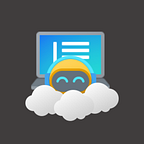Python Intermediate - Tkinter
An Understanding of Python Frameworks
Understanding Tkinter
As you journey through the world of Python, you’ll inevitably reach a point where you want to create graphical user interfaces (GUIs) for your applications. Tkinter is a powerful library that facilitates the creation of GUIs with ease. It’s based on the Tk GUI toolkit, which is known for its simplicity and versatility. Tkinter provides a wide range of widgets (buttons, labels, entry fields, etc.) and layout managers to help you design your application’s interface.
In this blog post, we’ll explore Tkinter, understand its file structure, and build your first Tkinter application. Our goal is to create a Text editor application that runs seamlessly on Windows, Linux, and macOS.
Tkinter File Structure
Before coding, let’s establish a simple Tkinter file structure.
In this structure, app.py is the main Python script for your Tkinter application, and the assets folder can store any additional resources your app may need like images, icons, audio, etc.
Building Our First Tkinter App
Now, let’s create a basic Tkinter application. First, ensure you have Tkinter installed
pip install tkNow, let’s structure our project
Run in localhost
Now, let’s test our project locally
everything works well as expected.
GitHub code
Turning Your Tkinter Txeditor into an Application
Windows
- Open a command prompt and run the following command to install PyInstaller
pip install pyinstaller- In the command prompt, navigate to the directory containing your
app.pyfile. - Run the following command to create an executable file for your app
pyinstaller -F -w -i assets\Mr.Cloudexplorer_logo.ico Txeditor.pyThis command generates a dist directory containing the executable file. The Txeditor option bundles everything into a single executable.
Navigate to the dist directory, and you'll find your standalone executable file (e.g., Txeditor.exe on Windows or Txeditor on Linux). This file can be distributed and run independently on both.
Just double-click and use the application
Congratulations! You’ve successfully built and rendered your first Tkinter application.
In the next blog post, we’ll explore another framework and create a simple app, continuing our journey into the exciting world of Python development. Stay tuned!
Happy coding!
Reach me 👨💻
